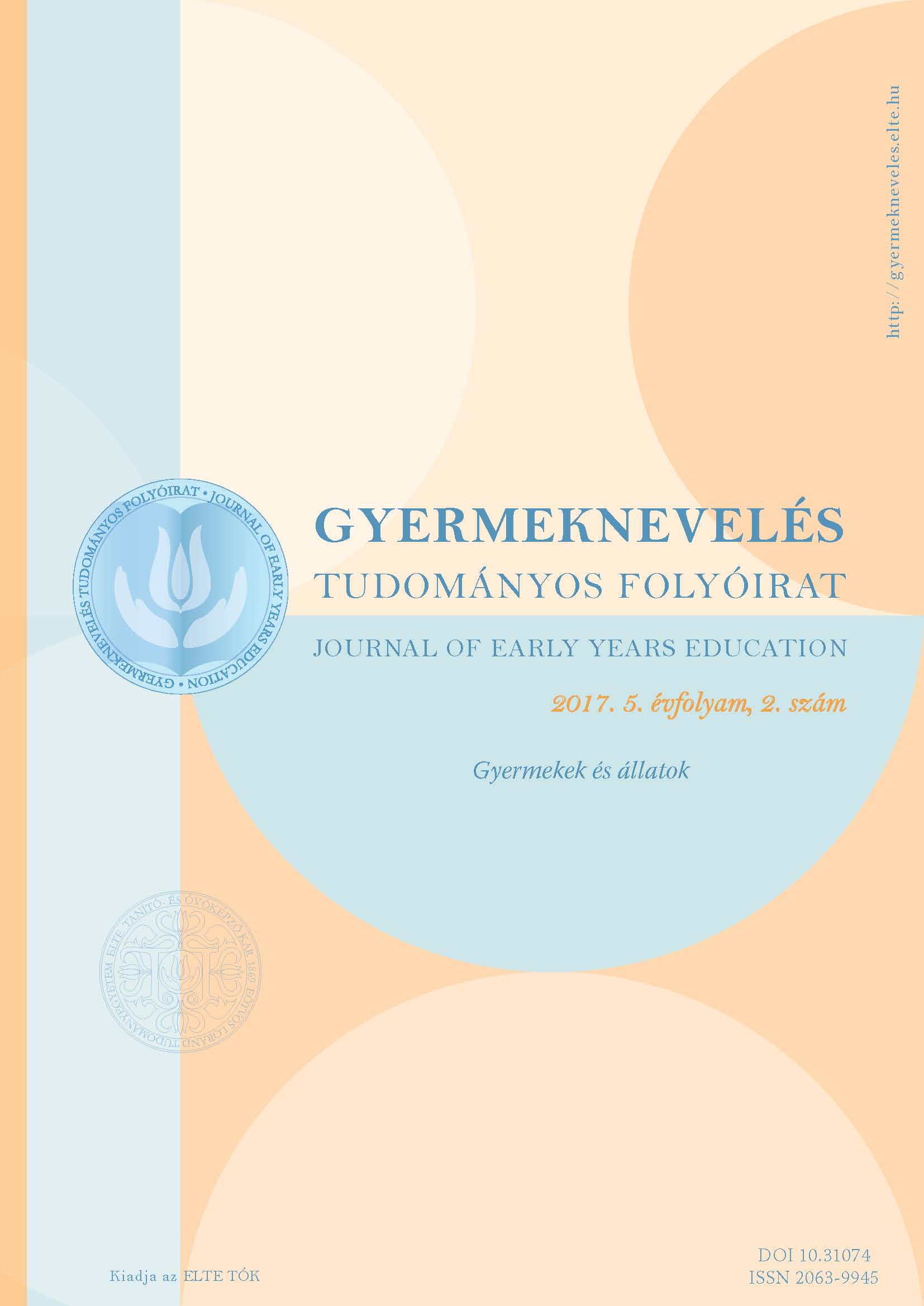Visual attention in children with special educational needs and disabilities: the effects of the presence of a therapy dog
Keywords:
therapy dog, children with disabilities, attention skills, generative pedagogyAbstract
Over the last few years an increasing number of social and educational institutions have initiated collaboration with service dog organizations in Hungary with the aim of implementing dogs into therapeutic environments. As a result of these efforts there is an increasing trend in the use of dogs that are trained specially to provide therapeutic benefits to children with special educational needs and disabilities. Although the value of dog-assisted therapeutic interventions is widely acknowledged, quantitative evaluation of the therapeutic effects as well as studies investigating the underlying mechanisms seem to lag behind. The present study represents a first step towards fulfilling the need for scientific research and development of standardized methods in animal-assisted therapy. 28 school-aged children with mental and physical disabilities (from Csillagház Elementary School) were video-recorded in social situations where they were asked to establish and maintain eye contact either with a therapy dog or an adult human partner. Pupils also participated in a control situation (using a counterbalanced within-subjects design) where the therapy dog was replaced with a life-size plush dog. The analyses of various behavioural measures of children’s visual attention and facial emotional expressions provide support for the positive emotional effect of the presence of therapy dog. Results also show that therapy dogs have the potential to efficiently facilitate attentional resources in children with special educational needs and disabilities. This suggests that special education teachers can use dog-assisted activities as a supportive method to develop skills in children with special needs. Although these findings fit well with the assumptions regarding the mechanisms underlying therapeutic benefits of dogs, our results also highlight the need for further well-designed research in this field toward a deeper understanding of what is already known about the role that dogs play in generative pedagogy.
Downloads
Downloads
Published
How to Cite
Issue
Section
License
Copyright (c) 2017 Author

This work is licensed under a Creative Commons Attribution-NonCommercial-ShareAlike 4.0 International License.

